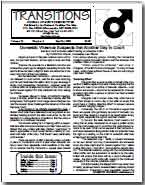Assoc. Prof. Gary Misan, Ms Chloe Oesterbroek, Centre for Rural Health and Community Development, UniSA
There is no doubt that long swings, twelve hour shifts, long hours sitting in front of computer terminals or driving machinery, as much as you can eat and drink laid out free all day every day in the mess halls, disturbed sleep patterns from shift work and feeling too tired or that there is no time to exercise make it difficult for FIFO workers to maintain a healthy diet and lifestyle. However, there are some things you can do to lessen the load and stay fit and healthy (Scott 2000).
First and foremost, stop smoking. If you can’t do it on your own then get some help, there is no excuse these days. Second, limit your alcohol intake; that means a couple of cans of light beer at most per day, and have a couple of alcohol free days each week. Next, eat less and exercise more, a simple prescription, although no magic pill.
With such a large selection of food available at the mess hall and cheap grog at the wet mess it becomes easy to fall into poor eating and drinking habits. As far as the mess goes, don’t be tempted to have a bit of everything on offer, rather decide on a moderate size meal each day and mix it up a bit so you keep things interesting. A balanced diet with foods from a variety of food groups and everything in moderation is recommended. If you eat half a cow and a sack of potatoes after every shift, you are obviously going to have a problem maintaining a healthy weight. Use the 50:25:25 rule; fill half (50%) the plate with salad and vegetables, a quarter (25%) with protein such as meat or cheese and a quarter (25%) with carbohydrates such as breads, pasta or potatoes (Ranford et al. 2012). Avoid creamy sauces or food that is fried.
For your main meals watch your portion sizes and make mostly healthy choices. Don’t try to stack your plate more than the next guy at the table and avoid going back for seconds. Have muesli or porridge for breakfast most days rather than popular breakfast cereals which are very high in sugar. Wholemeal bread makes great toast and have some fruit or fruit juice to round it off. Limit the ‘big breakfast ’ to once or twice a week at most. For other meals, limit red meat to 2 – 3 times a week and keep the portion sizes to 200-300 grams. Squeeze in a couple of chicken and fish meals each week (preferably not fried). Eat plenty of fruit, salad and vegetables and minimise your alcohol intake as well as that of soft drinks and cordials.
It is true that breakfast is the most important meal of the day. A hearty (but healthy breakfast) will give you energy right through until lunch and means you will be less likely to want to snack on sweet foods. Eat three meals a day and snack on fruit between meals rather than biscuits and cake and you’ll feel lighter and healthier and will have more energy throughout the day (or night). Avoid so called ‘health bars’ and energy foods as snacks as these are usually very high in sugar or fat and thus high in calories; opt for fresh fruit, yoghurt and sandwiches (each with a glass of water) instead to relieve hunger pangs(Ranford et al. 2012).
As far as fluids go, water is best as it has no calories, it reduces hunger pangs, boosts energy and curbs fatigue. Drinking plenty of water (not Coke or similar) particularly after exercise (which can make you hungry) will also help make you feel full and reduce your appetite at meal times. Caffeine and energy drinks are OK from time to time but should be kept to a minimum. Did you know that a can of coke contains the equivalent of about 10 teaspoons of sugar and each teaspoon is about 25 calories. If you are drinking 1-2 litres of coke a day (3-6 cans) then you are consuming between 125 – 250 grams of sugar (half a small bag of sugar from the supermarket) PER DAY ! Alcohol too is just empty calories, if you do drink then choose light or low carb beer and have no more than two cans. If you plan on having 8 hours sleep at night then avoid caffeine (including Coke) or energy drinks 4 hours before bedtime and drink milk (not iced coffee), fruit juice or water instead (Atkinson Davenne 2007).
The Australian Physical Activity Guideline’s recommend at least 30 minutes of moderate physical activity each day, in no less than 10 minutes blocks of time. Moderate means activity that increases your heart rate and makes you warm and puff. Weight bearing exercise is best (lifting weights, brisk walking, jogging). Several sessions of more vigorous activity each week are also recommended, e.g. running, squash and the like. Of course if you have a particularly demanding physical job, are on your feet all day, walking up inclines, ladders or shift heavy equipment routinely, then you are probably doing enough exercise. If not then its best to try and work some exercise into your daily routine; and remember that any exercise is better than none at all. This might mean walking back to camp rather than catching the bus at the end of the shift or spending a good half hour in the gym doing some light weights, spending time on the treadmill and maybe the rowing machine. Swimming, cycling and other aerobic exercise are great for cardiovascular fitness if there are facilities available on site. Group sports are good for both the body and the soul. Exercising before you eat is best.
Determining the best time to exercise and work out when doing shift work can be difficult and is largely dependent on the individual’s preference (Diranian 2011). For some, exercising before work is the easiest, whilst for others working out before sleep is preferred (Diranian 2011). Mild to moderate physical exercise is preferred over intensive training to reduce fatigue and induce restful sleep (Atkinson, Davenne 2007). Some people say exercise increases their energy levels whilst for others it tires them out, so it really depends on your preferences and how your body responds to exercise to decide on the best routine for you. For Dayshift workers, exercise generally should take place after the shift, leaving a minimum of two hours between exercise and sleep for the body to recuperate (Scott 2000). Night shift workers should follow a similar protocol exercising after work before a nap or the main sleep period. If time and fatigue are an issue and you need to work out immediately before bed, it should be light, mild exercise as to not interfere with sleep (Scott 2000).
References
Scott, AJ 2000, Shift Work and Health, Primary Care: Clinics in Office Practice, vol 27, no. 4,
Atkinson, G, Davenne D 2007, Relationships between sleep, physical activity and human health, Physiology and behaviour, vol. 90, no. 2-3, pp. 229-235,
Diranian, S 2011, The Best time to work out if you work a night shift, Livestrong.com, accessed 5/9/12
Ranford, A, Willcocks, A, Anderson, L & Mining Family Matters (Organization) 2012, Mining families rock : your complete guide to healthy relationships, happy kids and a household that works, MiningFM, [Australia]


